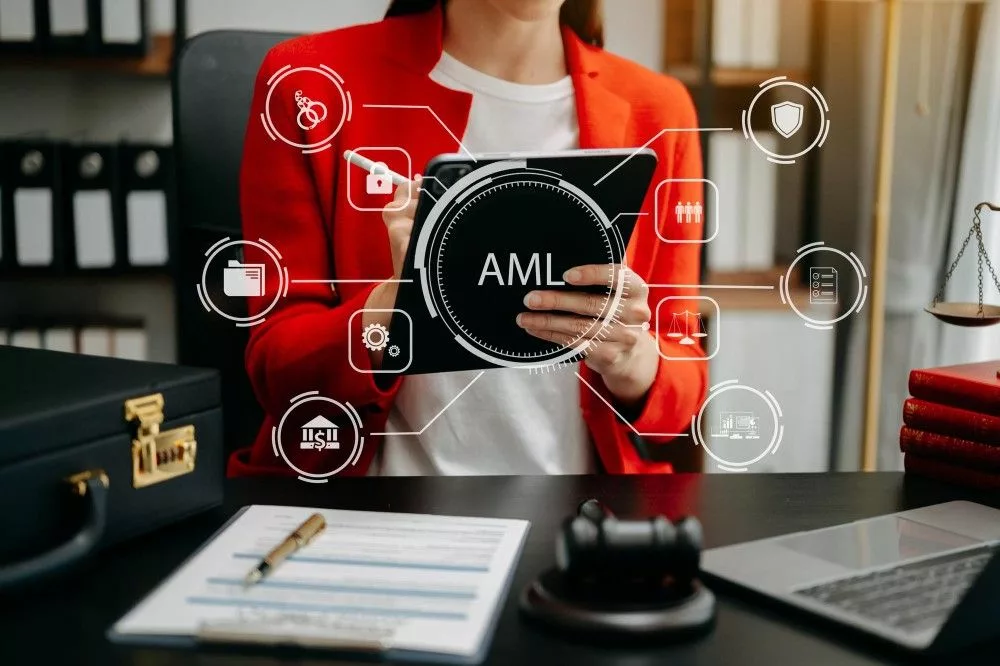AML Software Solutions Provide the Best Protection Against Financial Crimes for Businesses
In today’s connected business world, it’s crucial to seriously address money laundering and financial crimes. AML software refers to technology solutions designed to assist businesses in complying with Anti-Money Laundering (AML) regulations and detecting potentially fraudulent financial transactions. These tools are vital for ensuring regulatory compliance, protecting businesses from reputational damage, and safeguarding the financial system from criminal activities.
Let’s explore how AML software works, the types available, and the key factors to consider when selecting the right solution for your business.
AML Software in Action
Anti-Money Laundering (AML) software serves as a proactive tool to ensure that financial institutions comply with regulations and prevent financial crimes. This is crucial for steering clear of transactions with entities involved in illegal activities on an international scale.
The software continuously examines transactions, analysing patterns and flagging suspicious activities. One of its key functionalities is the generation of Suspicious Activity Reports (SARs), which provide detailed records of potentially illicit transactions. These reports enable financial institutions to track suspicious activities, identify involved parties, and pinpoint their locations.
An essential aspect of AML software is its contribution to day-to-day compliance efforts. By monitoring reports submitted to financial authorities, the software helps institutions remain alert to emerging risks. Automating these tasks not only eliminates the need for time-consuming manual scans but also ensures that compliance efforts are both efficient and accurate.


Varieties of AML Software
Explore the diverse landscape of AML software, each type tailored to address specific compliance needs:
AML Screening: Identifies individuals or entities on sanctions lists, politically exposed person (PEP) lists, or other watchlists, ensuring that your firm does not engage with restricted parties.
AML Transaction Monitoring: Flags suspicious transactions indicative of money laundering or other financial crimes, using real-time monitoring to detect unusual patterns.
KYC-KYB (Know Your Customer/Know Your Business): Verifying the identity of customers and businesses, collecting and validating customer information to identify high-risk customers or transactions.
Risk Assessment: Analyzing the overall risk of money laundering or other financial crimes within an organization and offering suggestions for minimizing these risks.
Understanding these types of AML software is a critical step in choosing a solution that aligns with your business’s unique compliance challenges.
CONTACT US FOR SELECTING THE RIGHT AML SOFTWARE
Key Considerations for Choosing the Right AML Software
In today’s complex financial landscape, the selection of Anti-Money Laundering (AML) software goes beyond fulfilling regulatory obligations—it is a cornerstone of a strong compliance framework. With the potential for hefty fines, reputational harm, and legal consequences stemming from non-compliance, the stakes are high. However, the abundance of available solutions can make identifying the ideal software a daunting task. To simplify this process, we have outlined key considerations that will guide you in choosing a solution that aligns with your firm’s unique needs and long-term goals.
- Understanding Your Firm’s Needs
Before diving into various software options, it is crucial to have a clear understanding of your firm’s specific needs. Start by considering these essential questions:
- What is the size of your firm? Larger firms may require more robust solutions with advanced features, while smaller firms might benefit from simpler, cost-effective options.
- What is your industry? Different industries have unique regulatory requirements. For instance, financial institutions may have different needs compared to real estate firms or casinos.
- What are your current compliance challenges? Identify specific pain points, such as transaction monitoring, customer due diligence, or reporting obligations, that need to be addressed.
- Regulatory Compliance Features
The primary goal of AML software is to ensure compliance with local and international regulations. Look for features that support regulatory adherence, including:
- Automated Transaction Monitoring: The software should analyse transactions in real time to identify suspicious activities and flag them for further investigation.
- Customer Due Diligence (CDD): Ensure the software facilitates thorough risk assessments and ongoing monitoring of customer profiles.
- Reporting Capabilities: It is vital that the software can generate accurate and comprehensive reports, such as Suspicious Activity Reports (SARs), with ease.
By choosing a solution with strong regulatory compliance features, your firm can significantly reduce its risk of fines or penalties.
- Integration with Existing Systems
Your AML software should integrate seamlessly with your firm’s current systems, such as Customer Relationship Management (CRM) tools, accounting software, and other compliance platforms. This integration is critical for:
- Data Consistency: Ensuring that data is uniform across systems reduces errors and enhances the accuracy of compliance efforts.
- Efficiency: Streamlined workflows save time and resources by eliminating the need for manual data entry or repeated tasks.
- Scalability and Flexibility
As your firm grows, its compliance needs may evolve. It is essential to choose AML software that can scale alongside your business. Consider:
- Scalability: Ensure the software can handle increasing transaction volumes, larger customer bases, and more complex compliance requirements.
- Customization: The ability to tailor features and workflows ensures the software remains relevant as your firm’s priorities shift.
- Updates and Upgrades: Regular updates from the provider are necessary to stay compliant with evolving regulations and leverage the latest technology.
- User-Friendliness
Even the most advanced software is ineffective if it is too complicated for your team to use efficiently. A user-friendly interface can enhance adoption and reduce training time. Look for:
- Intuitive Design: Easy navigation and clear dashboards make the software accessible to all users.
- Training and Support: Ensure the vendor provides comprehensive training resources and responsive customer support.
- Customization for Workflows: Simplifying tasks through tailored features can help teams maintain focus on critical compliance activities.
- Cost Considerations
While AML compliance is a necessity, it’s important to choose software that aligns with your budget. Evaluate:
- Total Cost of Ownership: Consider not just the purchase price but also implementation, training, subscription fees, and ongoing maintenance costs.
- Return on Investment (ROI): Compare the cost of the software against potential savings from reduced fines, fewer compliance errors, and improved efficiency.
- Vendor Reputation and Reviews
A reputable software provider is essential for long-term reliability. Before making a decision, research vendors thoroughly:
- Independent Reviews: Read testimonials and case studies from other firms in your industry to understand how the software performs in real-world scenarios.
- Customer Support: Assess the quality of customer service to ensure quick resolution of issues.
- References: Ask for client references to gain insights into the vendor’s reliability and support track record.
- Trial Periods and Demonstrations
Most AML software providers offer trial periods or live demonstrations. These are invaluable opportunities to:
- Test Features: Determine if the software meets your specific needs and integrates well with your existing systems.
- Engage Employees: Involve your compliance team in testing to gather feedback and identify potential challenges early.
Final Thoughts
Choosing the right AML software is not just an investment in compliance but also a commitment to safeguarding your firm’s reputation and future. By thoroughly evaluating your firm’s unique needs, ensuring alignment with regulatory requirements, and prioritizing seamless integration, you can select a solution that strengthens your compliance framework and minimizes risk.
In Conclusion
AML software is no longer an optional tool; it is essential for ensuring financial integrity and combating financial crimes in today’s complex global environment. By streamlining processes like transaction monitoring and risk assessments, AML solutions empower businesses across industries to identify and mitigate risks such as money laundering effectively.
Discover how Adilzone’s AML tools, including the comprehensive AML Compliance ERP solution, 1st Compliance, can revolutionize your compliance strategy. Designed with user-friendly, innovative features, 1st Compliance addresses the modern demands of financial compliance, ensuring your firm stays ahead in combating financial crimes.
Take the first step toward a more secure, efficient, and compliant future. Explore Adilzone’s offerings today and see how 1st Compliance can be the cornerstone of your AML strategy.


